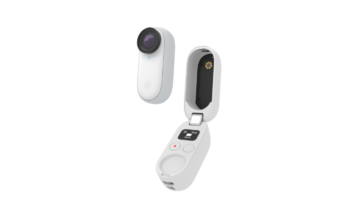CAN Go Smart Cane
This smart cane uses artificial intelligence to help people with visual impairments navigate their surroundings more safely and independently. It features sensors that detect obstacles and hazards, as well as a GPS tracker that can help users find their way.

Cionic Neural Sleeve
This wearable device uses electrical stimulation to improve hand function for people with neurological conditions like Parkinson’s disease and stroke. It has been shown to improve grip strength, dexterity, and range of motion.

Naqi Neural Earbuds
hese earbuds use artificial intelligence to analyze brainwaves and provide real-time feedback to help users relax and focus. They can also be used to track sleep patterns and heart rate.

Lancôme Hapta
This smart lipstick applicator uses vibration and audio cues to help people with visual impairments apply their lipstick more accurately. It also has a built-in camera that can identify colors and provide voice feedback.

Sony Access Controller for PS5
This adaptive controller for the PlayStation 5 is designed to be more accessible to people with disabilities. It has customizable buttons and triggers, as well as a variety of other features that can make gaming more enjoyable for everyone.

Music: Not Impossible
This project is developing a new musical instrument that is designed to be played by people with quadriplegia. The instrument uses sensors to detect muscle movements, which are then converted into musical notes.

LEGO Braille Bricks
These LEGO bricks have Braille dots on them, making them accessible to blind and visually impaired people. They can be used to build a variety of different structures and creations, just like regular LEGO bricks.

Samba Robotic Toothbrush
This robotic toothbrush uses artificial intelligence to clean teeth more effectively than a manual toothbrush. It can also be used to track brushing habits and provide personalized feedback.




